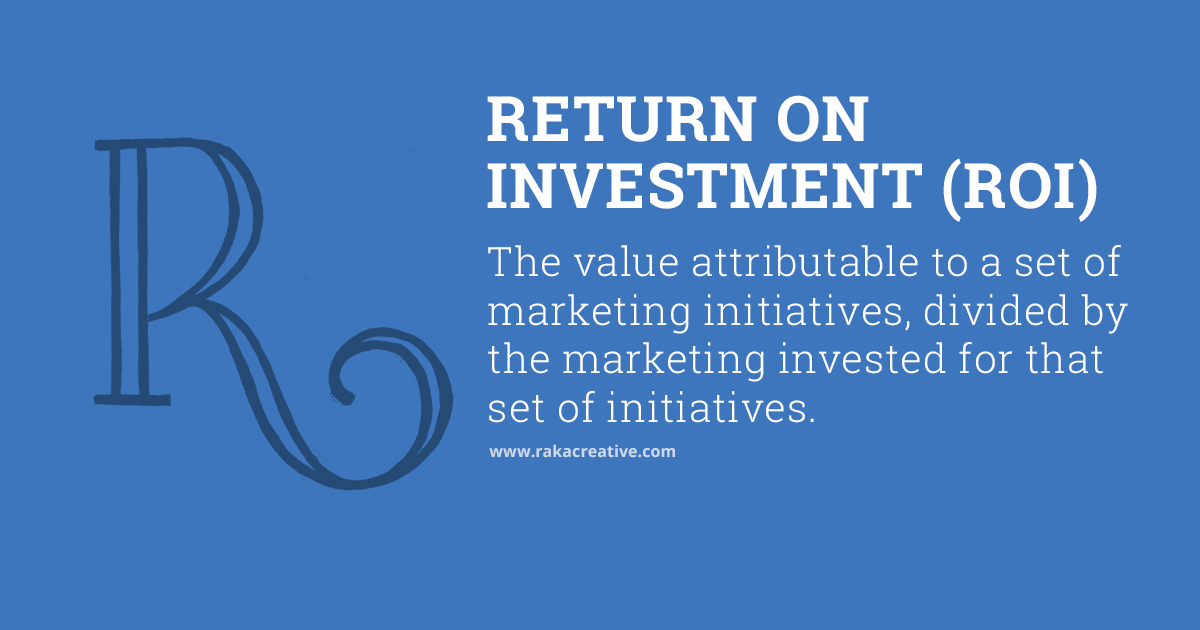While veteran marketers are tired of being beaten over the head by return on investment, the term isn’t always familiar to our clients. Some actually think ROI is a bit of Millennial witchcraft created to justify things like Snapchat. For the uninitiated, we’re here to explain why ROI is indeed critical for your marketing.
Tell me more
Return on investment is a simple concept: What do I get back for the time, resources, and money I spend? As an equation, it often looks like this:
(Sales Growth – Marketing Investment) / Marketing Investment = ROI
If your business cares about profitability and growth, this is how you find out whether or not the efforts you’re making are financially worthwhile.
See? No witchcraft. Just common sense.
Why ROI is important to marketers
Return on investment is all about evaluation and capturing performance metrics. When we create inbound marketing strategies for clients, we don’t just present to-do lists and hope for the best. Every initiative is tested and measured against Key Performance Indicators (KPIs), a core component of determining your ROI.
Let’s take email marketing, for example. Say you spend hours designing and developing beautiful emails for your customers. Great work! But how do you know if those hours were well spent? Start by tracking these metrics:
- Sends – Helps determine the health of your email lists. This gives you a baseline to measure open and visit rates.
- Opens – Helps determine the success of your subject line and health of email lists. The sent-to-open rate provides valuable insight.
- Visits – Helps determine the number of site visits attributed to email marketing. The opened-to-visits rate also provides insight.
- Opt-outs – Helps determine which types of mailings do not resonate with your audience for future campaign planning.
If you’re not getting the results you want, then you can feel confident about changing tactics. That means no more wasted time, no more wasted resources, and no more wasted money.
Where ROI gets tricky
So now you’re probably feeling super jazzed. ROI will save our marketing! Now we’ll know exactly what we need to do to be successful every time.
Not exactly.
If precise prognostication was possible for every campaign, no business would ever fail at marketing—and we all know that’s not reality. The problem is that the simplified equation is sometimes too simple. Let’s say you initiate the email marketing campaign we mentioned earlier. After the campaign, you discover total month-over-month sales are up. Huzzah! Success.
But how do you know the sales growth is directly attributable to the marketing campaign and didn’t just coincide with it? You have to dig deeper. Monthly comparisons, especially to the months proceeding the campaign, can help you analyze the impact more accurately. Your equation in this instance might look more like this:
(Sales Growth – Marketing Cost) / Marketing Cost – Average Organic Sales Growth = ROI
The bottom line? Measuring ROI will help your business as long as you don’t focus solely on predicting the future. Instead, think of ROI as a guide. If the results are bad, you make a course correction. If the results are good, keep sailing.
If you skimmed this post…
Return on Investment (ROI) is the value attributable to a set of marketing initiatives, divided by the marketing invested for that set of initiatives.
Want to learn more awesome inbound marketing terms? Check out our Inbound Marketing Definitions page.






